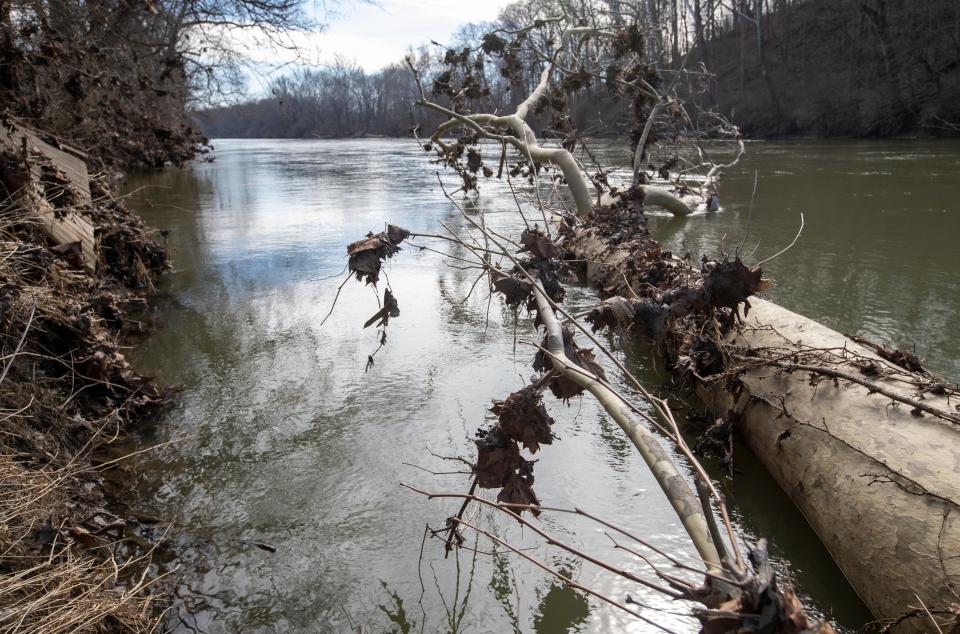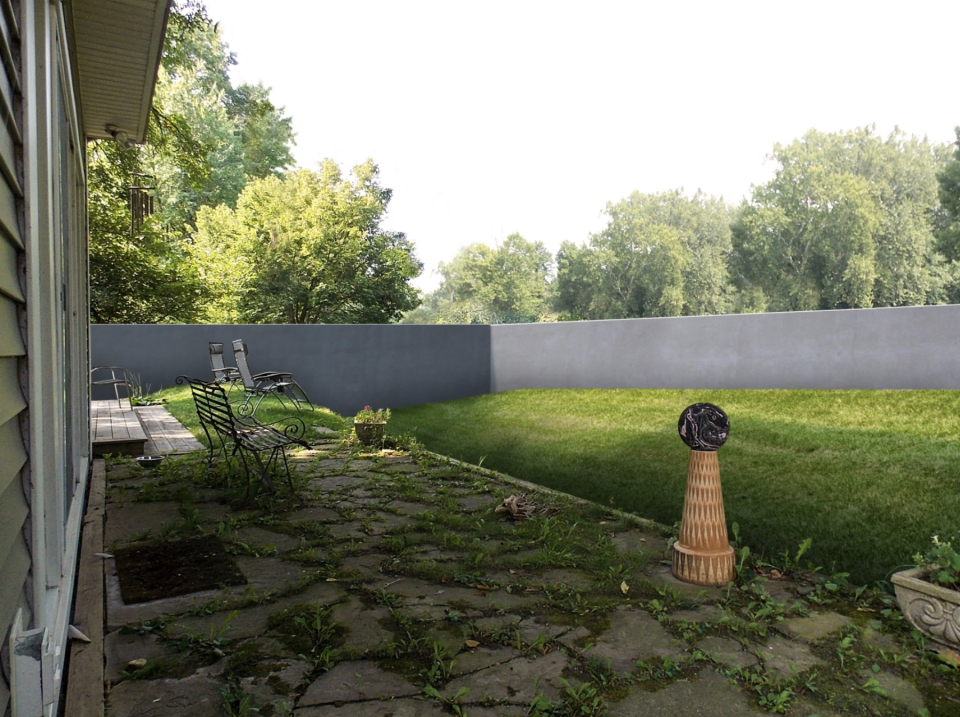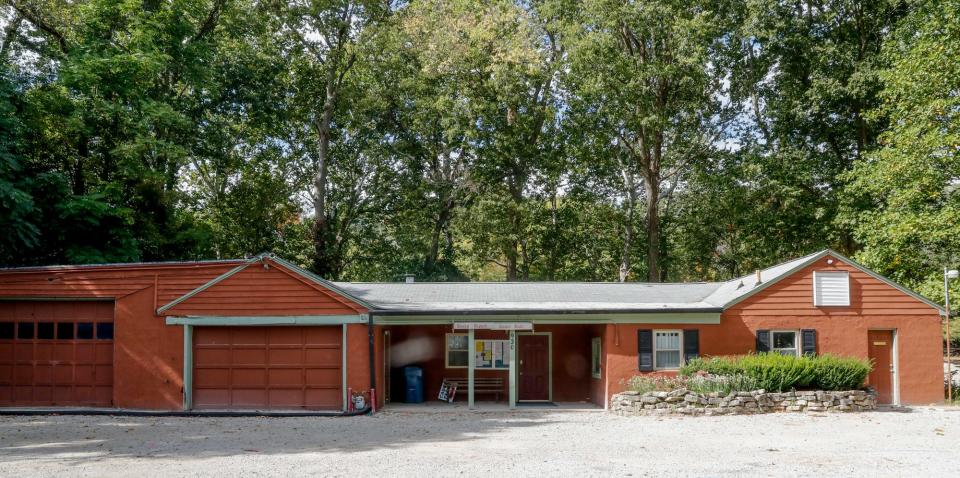Life on the river attracted people to Rocky Ripple, now the water may drive out families
Wayne Dowell has lived in Rocky Ripple, an incorporated town surrounded by the city of Indianapolis, since he was six months old.
Nestled between the White River and Central Canal, the main attraction for Dowell and many of the roughly 650 other residents is living in a unique oasis along the water. But that lifestyle comes at a price when the river floods.
The 86-year-old Dowell has lived through it. He also was living in Rocky Ripple when the first earthen levee was built along the river decades ago to protect the town. That work forced his parents and many others to move their homes slightly away from the river.
Now, a new flood control project may force Dowell even further from the river.
The family home Dowell was raised in on Riverview Drive — and where he still lives — is among as many as 14 houses that may be lost to protect Rocky Ripple from future flooding, according to new plans the Indianapolis Department of Public Works recently unveiled.
What drew so many to Rocky Ripple — the White River — may push some away.
“Where are we gonna go?” Dowell said. “It’s a peaceful place out here, one of the most peaceful in the whole city. We wouldn’t mind if the city stuck to what they originally said — we don’t want our houses taken out.”

This new proposal comes four years after the town and its residents agreed with the city to a no-demolition plan that would have left all houses standing. But the city said rising construction costs left it scrambling to lower the price tag and find alternatives. The Town Hall also is on the chopping block.
Still, city officials say finding a solution is critical: Climate change is expected to make floods more common and more severe, according to research from Purdue University.
“The ultimate goal is to provide flood protection to Rocky Ripple,” said Shannon Killion, DPW’s stormwater administrator. “So we were looking at how we can do that and stick within the range and money we have.”
Residents acknowledge they want flood protection, but not like this. The new plan to do it, which involves removing homes, has many from Rocky Ripple up in arms and calling for their locally-elected Town Board officials to push back.
'We all want flood protection'
There are roughly 300 homes, and about 600 residents, in the quaint water-locked town just northwest of Butler University. Several of Butler’s athletic fields are actually located next to Rocky Ripple.
The homes in Rocky Ripple are both large and small, and many are quite colorful — shades of purples, reds, yellows and blues. And the people are just as eclectic: "A community of artists, musicians, hippies and hillbillies," as described by a resident.
Many residents have large decks or screened in porches to spend as much time outside as inside. Dowell knows where there is an eagles nest across the river, or the call of the sandhill cranes that have been flying overhead the last couple days, or the spots where the turtles like to sun on the banks.
The original earthen levee that protects the town was put in decades ago, and since then the river has never topped it. But the levee is aging and in need of an upgrade. And the amount of precipitation and severe storms is on the rise, research from Purdue University shows.
There is a 92% chance the levee will be overtopped at least once within the next 50 years, according to a 2017 study by Los Angeles-based engineering firm AECOM. That would flood the area and put Rocky Ripple homes underwater, some by as deep as 10 feet.

Another analysis from Flood Factor, a tool from nonprofit First Street Foundation that calculates flood risk, puts almost all properties in the community at severe or extreme risk of flooding. The tool predicts Rocky Ripple houses have a 99% chance of being flooded in the coming decades.
Longtime Rocky Ripple resident Daniel Axler has seen the river go up and down, “and it is scary,” he said. The river got close to flooding the town in 1990 when the river rose 15 feet and again in 2005 when it climbed 14 feet. Both times the river crested just below the top of the levee.
Because of that flooding risk, construction within Rocky Ripple is now limited. Upgrading protections would open the area to building new homes or renovating existing ones. It also could help cut flood insurance payments for homeowners.
There’s a long history of efforts to protect the town from a flood.
In 1996, the town said no to a floodwall project from the U.S. Army Corps of Engineers that would have taken out dozens of houses along the river. Efforts on a separate proposal for Rocky Ripple didn’t start until just a few years ago.

That’s when Rocky Ripple, Indianapolis and Butler settled on a barrier consisting of an earthen levee where space allowed and physical walls where space was tight. It would have cost $66 million, according to a 2018 AECOM report, and save all the houses in Rocky Ripple.
“It was going to be two years of construction right behind our house and we were going to lose our view and access to the river,” said Axler, whose house is one of those that will need to be removed. “But we had accepted it, and now we feel cheated.”
“We all want flood protection,” Axler, a 34-year Rocky Ripple resident. “But they promised they could do it without taking houses down.”
Costs are 'infeasible' for the city
Beginning in December, DPW said it received updated estimates as part of the design process. The rising labor and materials costs had pushed the project total to nearly $95 million.
“That became infeasible for us,” Killion said.
So the department began telling residents that they were back to square one and everything was back on the table.
In 2019, the Indianapolis City-County Council approved the creation of a flood-control improvement district to fund the project. It’s similar to a tax-increment financing district, in which Rocky Ripple would use the expected increase in property values and thus added property tax dollars to reimburse the city.
Still, the upfront costs for the project are coming out of the city’s stormwater fund. The city is trying to figure out where and how it can cut costs to what it calls a “realistic range” between $70 million to $80 million.
“Without that, it would overburden the stormwater program fund” and the city’s ability to still build stormwater projects across the rest of the county, Killion said.
The new plan involves replacing several of the physical walls with more of the earthen levee. These levees, which are essentially large mounds of dirt, are much less expensive but also take up much more space. That means several homes and the Town Hall are in the way.

City officials first met with Town Board members and those homeowners most affected to let them know the news. DPW then held a meeting for the whole community in February.
There is a hope that some of the impacted homeowners will be able to move their house within their lot, but that is still unclear. For those property owners where that is not possible, the city will buy them out of their homes.
It will hire two independent appraisers to assess the property, according to Killion. Then the average of those two appraisals will be the offer the city makes to each owner, in addition to some relocation costs and a few other things. That initial offer starts the negotiation period so homeowners can sit down and work with the city to arrive at a number they feel comfortable with.
Neither Axler nor Dowell know where they would move. Dowell said he doesn’t need something big, but he does want to be outside the city.
“I’m not too happy with them right now,” he said.
Killion said the city is aware of the impact and the concerns of residents. “But we also are laying out that this is the best alternative we have right now to achieve that goal and protect Rocky Ripple,” she said.
'Good time to strike'
Town residents and its three elected board members are still weighing their options, but many of those riverside owners want the board to stand by the original plan that involved no demolition.
Axler put a new roof on his home last year. Michael Read said he and his wife just finished a multi-year project of rewiring and updating his house. Both said they wouldn’t have spent that money if they knew the city was going to tear down their homes.
“It’s a bait and switch, they’ve reneged on their offer,” Axler said. “If a car dealership or a real estate agent did that, you would walk away from that deal.”

Town Board President Mandy Redmond said the whole town was caught off guard by the change and that there “is frustration all around.”
Redmond, who has lived in Rocky Ripple for 38 years, voted as a resident against the Army Corps plan that would have removed dozens of homes. She said she was elected on the platform of working to get flood protection for the community. Redmond owns homes along the river but they would not be impacted by the change.
“The ultimate goal is to protect as many homes as possible from a catastrophic flooding event,” said Redmond. “We have consternation about taking people’s homes down to get there, but we have to weigh things carefully to get that protection.”
She said the town leadership is still supportive of moving the floodwall project forward. Officials are in a holding pattern, however, until the town receives further details from DPW about the revised plan, cost specifics and alternatives that weren’t pursued, Redmond told IndyStar.
City-County Councilman John Barth, who represents Rocky Ripple, said he also is working to get some more information, particularly about the budget. He hopes to help navigate these discussions and figure out what the best protection looks like.
Killion said the city is ready to move forward, but is waiting to hear what the town wants to do. Construction would take roughly two years once started. It also is an option for the town not to proceed with the flood protection, she said. But that would end the city involvement and no flood-work would be provided.
That said, Killion thinks now is a “good time to strike.”
“Money is available to complete this project and there is a path forward and that’s not something we can say will be there in five years or even two years,” she said. “The support is there right now and that’s why we’re here with solutions to provide that protection.”
Redmond said there isn’t any way they can move forward if the town wasn’t in agreement. The dialogue is ongoing and she said the town is looking forward to additional discussions.
Call IndyStar reporter Sarah Bowman at 317-444-6129 or email at sarah.bowman@indystar.com. Follow her on Twitter and Facebook: @IndyStarSarah. Connect with IndyStar’s environmental reporters: Join The Scrub on Facebook.
IndyStar's environmental reporting project is made possible through the generous support of the nonprofit Nina Mason Pulliam Charitable Trust.
This article originally appeared on Indianapolis Star: Rocky Ripple residents push back on anti-flood plan demolishing homes

